An interview with Ana Waleska Quevedo
Posted by Mariana De Niz, on 11 April 2023
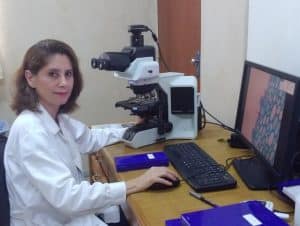
MiniBio: Ana Waleska Quevedo is a researcher at the Faculty of Agricultural Sciences at Universidad Autónoma Gabriel René Moreno in Santa Cruz de la Sierra, Bolivia. She is also a lecturer at Universidad Católica Boliviana. She is responsible for the Botanics lab at UAGRM. Since early on in her career, she specialized in Plant Anatomy. She uses various types of microscopy and sample preparation methods to investigate various types of plants, many of them native to Bolivia. She has been part of international collaborations with taxonomers and plant scientists in Brazil and Argentina. In addition to her work on basic science, the translation aspects of her work include the important aspect of plant science in the context of food security and sustainable development.
What inspired you to become a scientist?
I decided to pursue the scientific career as I was finishing high school. I was most interested in the biological areas – I wasn’t yet sure about which career exactly – I liked Biochemistry for instance, and I didn’t know that Biology was taught as a career at our University. Once I realized Biology as a career existed, this is when I joined. Of course Biology is a very broad discipline. At the beginning I was most interested in animals – the area of Zoology, but later I focused on Plants and the area of Botanics.
You have a career-long involvement Botanics and Microscopy. Can you tell us a bit about what inspired you to choose this path?
I first thought of Botanics as a specialization deriving from a subject I took during my undergraduate degree, called vegetable anatomy. I was in the 5th semester (out of 10 which the degree offers), and I was interested in vegetable physiology and vegetable systems. I had the opportunity to visit the Herbario regional del Oriente Boliviano (Herbarium of the East of Bolivia), which caught my attention. Still, the turning point is when I studied vegetable anatomy. I became truly interested in the internal structures of vegetables. It was very easy for me to understand the topic. When I was at the microscope, I could visualize everything we had learned in theoretical classes, very easily. To this day, I still find it fascinating to look down the microscope and see new structures. To be honest I wasn’t so interested in animal or human biology. I find it easier to study plants in general, however, microscopy is much slower because sample processing is much more complicated. Still we can do this techniques in labs that don’t need a lot of sophistication. In terms of my education, I studied all my career (undergraduate and postgraduate) in Bolivia, at the Faculty of Agricultural Sciences at Universidad Autónoma Gabriel René Moreno, in Santa Cruz de la Sierra. My MSc thesis was on the anatomy of vegetable organs among amaranth species in Santa Cruz, Bolivia. During this time, I went to a few postgraduate courses in Argentina and Chile. Every time there is a chance to collaborate with my colleagues there, I try to go.
Can you tell us a bit about what you have found uniquely positive about becoming a researcher in Bolivia, from your education years?
The University does not have a very strong research program. So we (the lab I belong to – the Botanics Lab led by Prof. Mercy Lopez) try to promote research. Mercy Lopez is my mentor, and I have worked with her since I was a young student. Together, we have set up the Botanics lab for the degree of Biology. She has contributed a lot to improving the infrastructure and equipment. We tried to become a reference lab for vegetable anatomy in Bolivia. We have achieved this goal- at present we are the only lab in Bolivia fully dedicated to this topic. Many projects that require expertise on anatomy country-wide, propose collaborations with us. We have collaborators from Cochabamba and La Paz. We have set up the lab from scratch, and we are negotiating with the local authorities to obtain funding to purchase equipment, but there isn’t a lot of funding available for research. So this can be challenging, especially because we need money to buy the reagents for sample preparation. We haven’t had a lot of support though. Bolivia is going through a moment of austerity, and the cost of reagents has more than tripled, especially since the COVID-19 pandemic. But we seek collaborators and networks that help us do our research, in addition to the students who are interested in the research topics. We also collaborate with expert taxonomers who work at the Noel Kempff Mercado Natural History Museum, and the Herbario regional del Oriente Boliviano. Together with their teams, we collect samples and perform research.
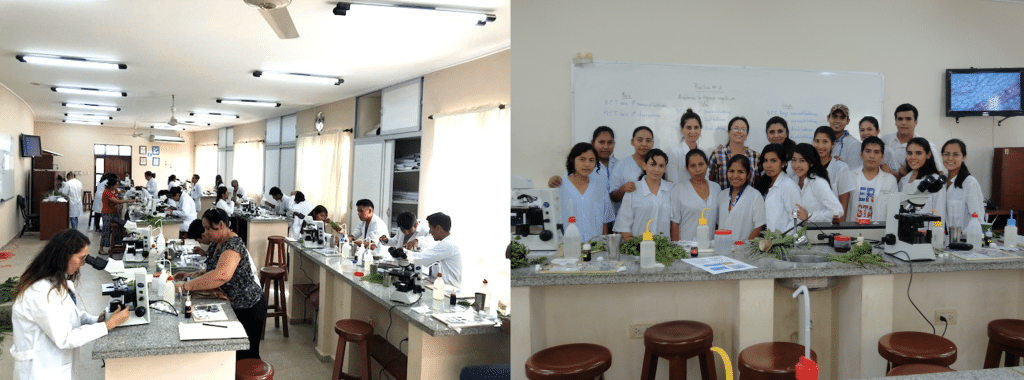
b) Training course on vegetal anatomy, with students and professionals from various careers.
Can you tell us a bit about your day-to-day work as a researcher at Facultad de Ciencias Agrícolas at Universidad Autónoma Gabriel René Moreno?
I have administrative duties within the Botanics lab – I am the lab manager. I have to make sure our lab has everything available for teaching courses to undergraduate students in several degrees of our Faculty. I addition to this, we also do research, and we provide services. We are not a huge team, and we actually lack technical support. Sometimes we can hire, seasonally, technicians who help us with the histology preparations. We also have another collaborator who helps us with the academic part of our job. In terms of research, we have contributed a lot to the development of the Vegetable Anatomy lab. We work together with lecturers to incentivize research, and help with the development of undergraduate projects each semester. We also help the students make their work ready for presentation at national and international workshops or conferences. In 2019, over 20 projects from the department of Botanics were presented in IV Bolivian Congress of Botany. In 2020 we organized a congress on Ecology and presented over 10 projects. This year, we are also presenting several projects in a congress of Botanics elsewhere in Bolivia. We support the students throughout the entire pipeline, from sample preparation to the obtention of photographs, the descriptions, and the final project. In addition, we collaborate in several regional research projects, for example we have been collaborating with taxonomers such as Dr. Moises Mendoza with whom we have been working on different plant genera. Two of them are Hydrocotyle and Manihot – the latter for which we are currently preparing articles for publication. Another project we are currently developing, also with Dr. Moises Mendoza, is support to the taxonomical challenge of the genus Sciodaphyllum. We hope to be able to publish several papers by mid 2023. We will soon require the support of another university in Cochabamba, where they will help us do SEM work, since, unfortunately, we don’t have scanning electron microscopes at our University. Altogether, my work is split as a lecturer, an instructor in practicals, and researcher. Additional to my work at UAGRM, I also work as a lecturer at a private university – Universidad Católica Boliviana, teaching for the degree of Biotechnology Engineering. This semester we will work on the project “Morphoanatomy of fruits and seeds of wild plants of Santa Cruz”. This project has already begun, and it has included the internal characterization of fruits and their properties. Now we will support a new group of students on this project, who will start their scientific careers.


Did you have many opportunities to interact with other Latin American groups, outside of Bolivia?
I’ve had the chance to work with several collaborators in Argentina and Brazil. There, the area of plant anatomy is really well developed. I have strong collaborations with Dr. Ana Maria Gonzalez in Argentina for example, with whom we have constant scientific discussions on both, scientific concepts and protocols for sample preparation. Other strong collaborators in the area of general anatomy include researchers in the USA. However, I don’t know about specific networks that aim to foster collaborations in my area, between Latin American countries. I would really like if stronger networks would exist in the region, to promote research, knowledge exchange and training opportunities. It would be really interesting for me to belong to a network of Plant Anatomists in the region.
Who are your scientific role models (both Bolivian and foreign)?
My mentor and colleague, M.Sc. Mercy Lopez has been super important in my career. She studied in Brazil and later came back to Bolivia to implement the new subject of plant anatomy, and who has done a lot to built the lab. Also, Dr. Ana Maria Gonzalez, from Argentina, has been key for me and for the field of plant anatomy, and who is both a great teacher and a great researcher. They are both important references in the field. Then there are inspiring taxonomers such as Dr. Michael Nee, who is from the USA. With him we have organized workshops on general plant taxonomy.
What is your opinion on gender balance in Bolivia, given current initiatives in the country to address this important issue. How has this impacted your career?
Opportunities for women are not plentiful in Bolivia. Yet my area is very open because we aren’t many people altogether. I think women have skills and abilities similar to men, but our society still has a lot of misogyny, which still prevents women from reaching positions of power in most fields. We still have to fight that on a daily basis.
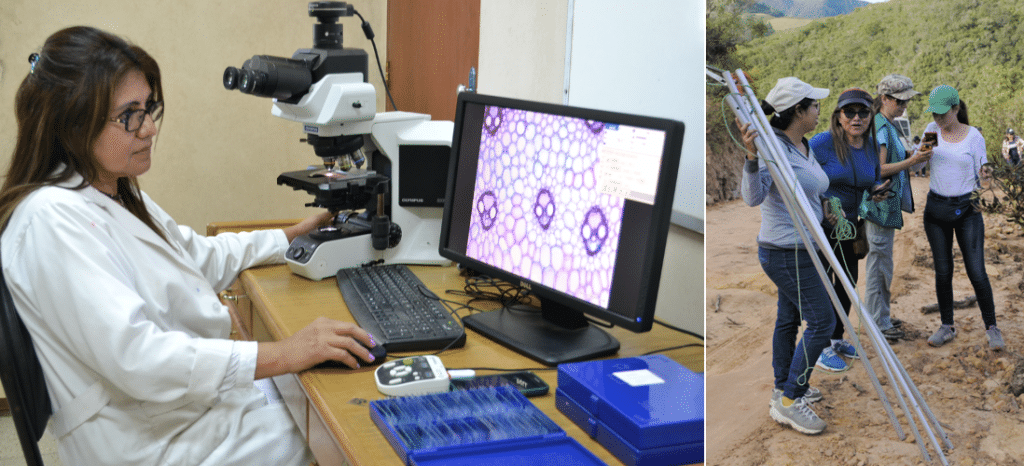
Are there any historical events in Bolivia that you feel have impacted the research landscape of the country to this day?
I wouldn’t be able to point out something specific. Bolivia has had dictatorships many years ago. Education hasn’t been promoted or prioritized as it should be. Research is not promoted either. In fact, professionals have been highly undervalued. Under recent administrations, anyone can occupy positions of power, even within science, without being researchers. I feel we have gone backwards in this regard. Although in theory the government promotes conservation of “Mother Earth”, in practice this is not true. There are lots of limitations. We have gone through some plentiful stages, for examples when hydrocarbons were highly valued in the international market, and we could sell them and make profit from taxes. During this time, we had resources to do research and purchase the necessary equipment. For instance, it was then that our current lab was built and equipped. But going forward, we haven’t received the support we need in our field. In fact most projects focusing on basic science are not well funded. We always have to look for applied science in order to get funding, as this often has priority in funding schemes of the country. That’s the general picture, however, I can’t think of a specific event I can pinpoint as decisive for the way we do research now.
Have you faced any challenges as a foreigner if you have worked outside Bolivia?
Yes. Language is a challenge- for me it’s very difficult to learn languages. I lack the auditory capacity to distinguish between languages. Even different forms of Spanish spoken in the region is hard for me. Still I have collaborators who can support us whenever a foreign language is required for communication.
What is your favourite type of microscopy and why?
I don’t think I have a favourite type because we don’t have a huge range of microscopes at our institute. We have applied for equipment grants, but we still only have access to light microscopes. We are interested in acquiring a SEM microscope – they are now much simpler and more practical: you just place the sample inside a chamber that looks like a CPU and it’s all pretty simple. We have mostly Olympus microscopes because they have made the best offers in the region.
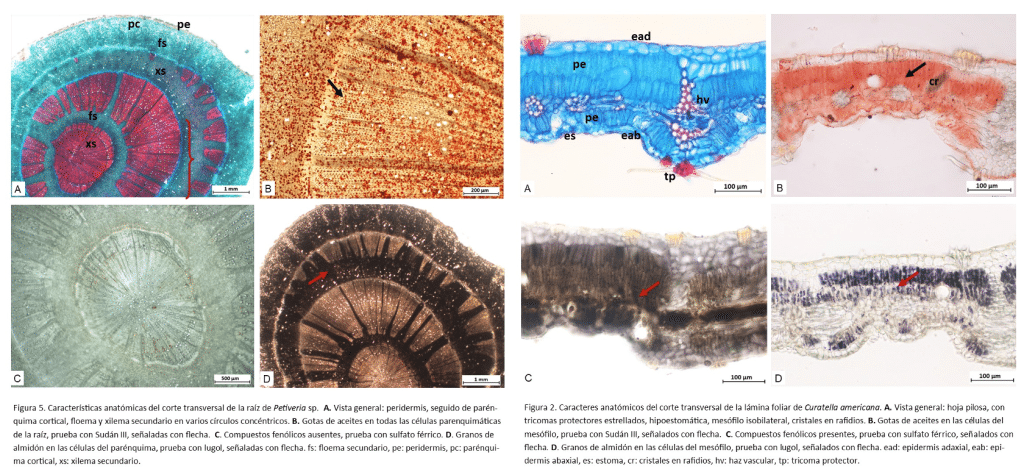
What is the most extraordinary thing you have seen by microscopy? An eureka moment for you?
When I am studying a new group of plants – recognizing the roots, stems and leaves of a new plant I hadn’t seen before is always a fascinating experience. Sometimes we don’t find something new, depending on the plant group, or the organ we are investigating. We also try to figure out the function of structures within a plant based on their anatomy. Microscopy gives us the first picture and the first hints in this endeavour. Bromeliaceae for example, are very interesting (and complicated to study and process for imaging) – they have a lot of internal variability, and sometimes they surprise us.
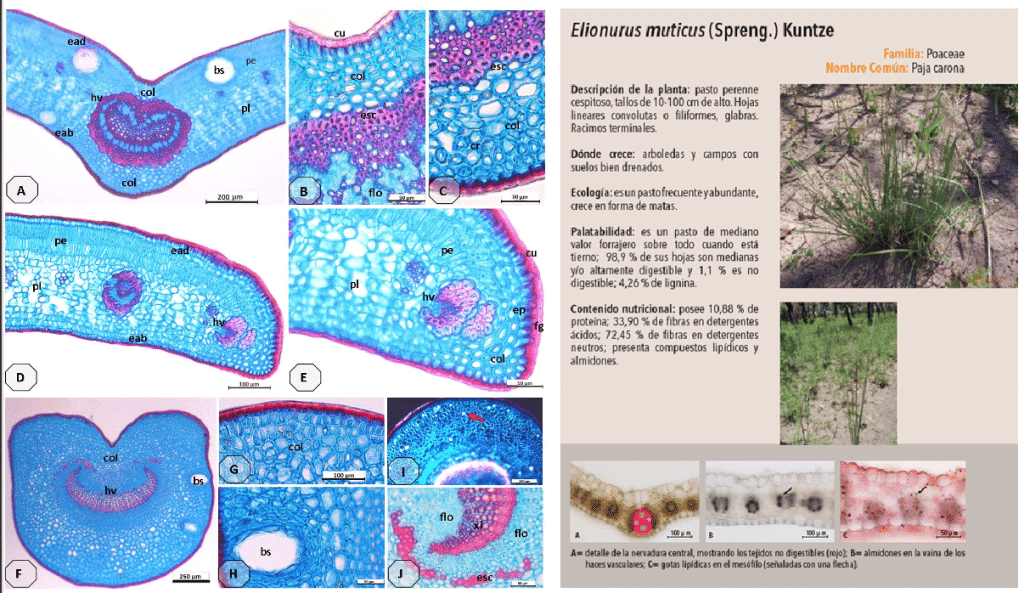
What is an important piece of advice you would give to future Bolivian scientists? and especially those specializing as microscopists?
To become a scientist you have to be very patient. Things rarely ever work out immediately. You need patience to acquire funding to perform your research. In my area, you also need to travel to find and collect the samples you want to investigate, and this needs patience and dedication. And then comes the actual lab work – not everyone will thrive in a lab, because again it requires a huge capacity of concentration, patience, detail-orientation, meticulous work, and dedication once at the microscope. You also need a lot of curiosity, resilience and perseverance. One should read a lot to have a good basis prior to and during the experimental work – otherwise you cannot design a good methodology – you won’t know what techniques to apply. You need to know how to read the right papers and how to search for those. You need a certain level of intuition too. Showing initiative is also a huge plus in a researcher, and a necessary skill.
Where do you see the future of science and microscopy heading over the next decade in Bolivia, and how do you hope to be part of this future?
I think in my specific area of expertise – plant anatomy – people are starting to slowly realize the relevance of the work. In previous decades for example, people didn’t seem to realize why this is an important or relevant topic. There is a direct application in linking structure and function, and this allows us to better make the most out of the natural resources (i.e. the plants) we have. One particular interest on applicability of the work I do, is food security for example. I think this type of research will have much more impact in the agricultural area – they are economic motors in the region. Slowly, people are realizing that the study of basic science, has important applications, including in the sustainable development goals. Another important field that is gaining momentum is palynology – the study of pollen grains. This for example has important application in the commercialization of honey. I see there is a promising future in this area. But we need further financial support from our institutes, as well as more human resources who have the necessary skills to potentiate this area.
Beyond science, what do you think makes Bolivia a special place to visit and go to as a scientist?
Its landscapes and its people. We have a huge diversity of environments. One can see huge differences between the East and West of Bolivia. There is a huge diversity of landscapes and ecosystems. Whoever likes mountains can go to the West. The department of Santa Cruz shares some of this beauty. Nearby we have the Cordillera Oriental, which is the “elbow” of the Andes. In the East we have the Chiquitana region, with pre-cambric landscapes, which also has its unique views. I love the Chiquitana region, las Serranias de Santiago- which is a protected area, rivers, lakes, etc. There is a huge diversity of vegetation too. And to be able to visit everything, it would take a lifetime. Because of my work, I have been able to visit many places in the region, and have seen opportunities for research too 🙂 there are many interesting plants everywhere you go. At the border with Brazil, we have the Pantanal (the swamps). Sadly, this is under threat due to farming work, and mining activities. There’s also the Titicaca river, the Tihuanaco, the Poopó, the salt flats, etc. I am more used to the green views, so dry areas are not as attractive to me, but I still see the beauty of these areas. Beyond the landscapes, the people are very nice. In small towns, the culture, beliefs, music, etc are well preserved. People are very kind.


 (No Ratings Yet)
(No Ratings Yet)